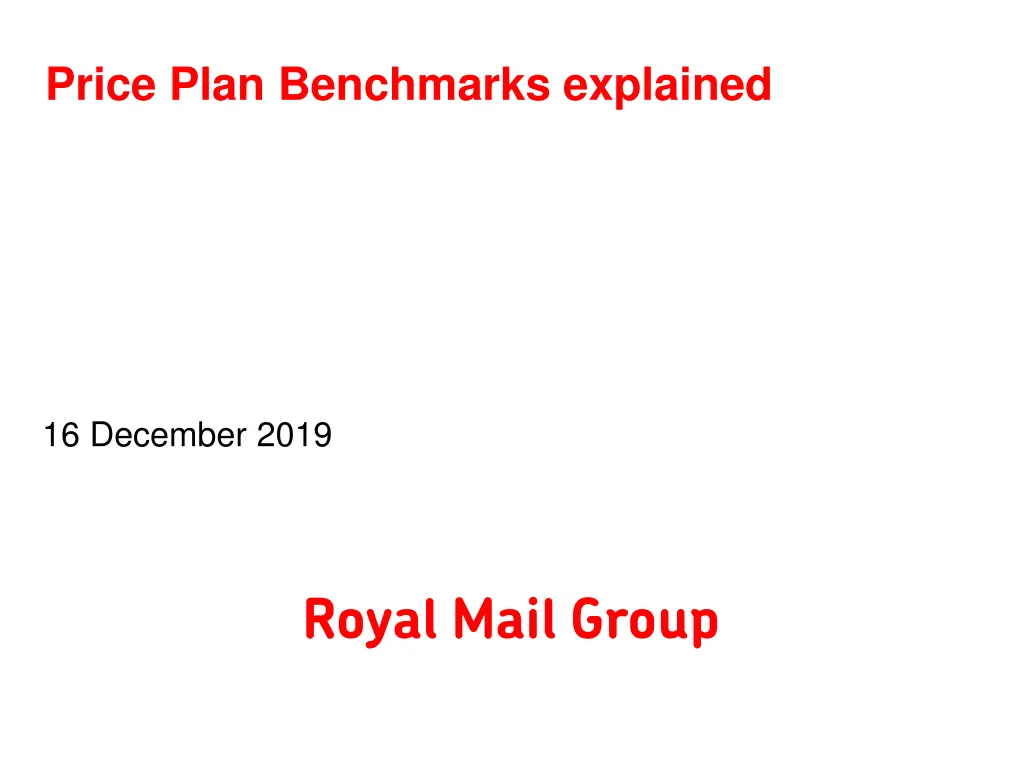
Understanding Price Plan Benchmarks and Profile Creation
Explore the intricacies of price plan benchmarks and profile creation, including data sources, key differences, zonal allocations, and benchmark updates.
Download Presentation

Please find below an Image/Link to download the presentation.
The content on the website is provided AS IS for your information and personal use only. It may not be sold, licensed, or shared on other websites without obtaining consent from the author. If you encounter any issues during the download, it is possible that the publisher has removed the file from their server.
You are allowed to download the files provided on this website for personal or commercial use, subject to the condition that they are used lawfully. All files are the property of their respective owners.
The content on the website is provided AS IS for your information and personal use only. It may not be sold, licensed, or shared on other websites without obtaining consent from the author.
E N D
Presentation Transcript
Price Plan Benchmarks explained 16 December 2019
Profile creation at a glance Building blocks and process Postcode sectors allocated to a zone with associated mail volume annually Profiles calculated, which help determine what customers are required to achieve: Postcode sector data consolidated into SSCs Zones: PP1 Urban Suburban London Rural National Spread Benchmark 86 or 48 SSCs Does the customer proportion of mail in each SSC reflect the national postbag? PP1 11,000 PC sectors Urban Density Benchmark Does the customer proportion of Urban mail in each SSC reflect the national postbag? PP2&4 Zonal Posting Profile Does the customer proportion of mail in each zone reflect the RMG F2E Mail volumes: Baseline Year (PP1); or Financial Year (PP2 & 4) * * Baseline Year is a contractual term applicable to PP1 which uses the actual fall to earth of the national postbag during the baseline year to enable us to determine the Profile that customers need to achieve in subsequent years Classified: RMG Public
Profile comparison at glance Price Plan Profile measure Measure level Zonal allocation input Volume input period How often it is updated Required notice National Spread Benchmark Currently using 15/16. Aspiration annually SSC Baseline Year 190 days PP1 70 days for changes to zone allocations, or 190 days for changes to Baseline Year Annually, capturing changes of postcode allocation to zones only Urban zone in SSC Urban Density Benchmark Baseline Year Zone (national) PP2 Each year, capturing zonal changes and updated volumes Zonal Posting Profile Latest financial year 70 days Zone (regional) PP4 Profiles always come into effect at the start of the contract year (April), meaning notice is given in Jan (70 days) or Sep (190 days). Classified: RMG Public
Data sources and key differences in the makeup of the Benchmarks Current Updated (proposed) 2019/20 Benchmark (2015/16 baseline volumes) 2020/21 Benchmark (2018/19 baseline volumes) DSA DocketHUB declaration and Retail MCS Source data DSA and Retail Mailmark and MCS PP1 NSB Baseline Year volumes Jul 2015 to Jun 2016 Apr 2018 to Mar 2019 Source data DSA and Retail MCS DSA and Retail Mailmark and MCS PP1 UDB Baseline Year volumes Jul 2015 to Jun 2016 Apr 2018 to Mar 2019 We will utilise Mailmark data for greater assurance on the accuracy in the UDB and align the NSB and UDB source data. In addition, the introduction of the 48-way sort service means the NSB source data has to change from DocketHUB to continue to create an 86-way sort benchmark. PP2 & PP4 benchmarks source data is DSA and Retail Mailmark, and MCS. Classified: RMG Public
Allocation of postcode sectors to zones An important input to UDB & Zonal Posting Profiles Each year we assess the zone allocated to each postcode sector based on factors such as delivery point density. London is allocated based on the volume of mail in each SSC that is within the London boundary. Any SSC that straddles the boundary is assessed on the volume inside and outside London. The change in allocation of postcode sectors to zones each year is minimal*, except where an SSC changes from being classed as London to Urban/Suburban/Rural, or vice versa. This process ensures changes to delivery points are reflected in the Royal Mail Urban Density Benchmark and Zonal Posting Profiles. * For 2020 just 40 postcode sectors changed of the 11,000 Classified: RMG Public
Profile calculations in detail 1 3 4 5 2 PC sector Zone SSC Volume SSC A B C D NSB UDB AB10 1 A 310 100 310 % % HA0 1 D 375 50 Volume 375 % % AL2 1 B 359 75 % % AL3 6 C 359 10 Zonal Profile 6 % % % % Each postcode sector has a zone allocated, and belongs to an SSC 1 Mail volume is allocated to each postcode sector 2 Postcode sectors are summarised into SSCs, and volume for each zone within each SSC is summed 3 PP1 NSB is the SSC volume as a % of total volume (all zones) 4 PP1 UDB for each SSC is the volume of zone A (urban) / total volume for the specified SSC 5 Zonal Profiles are the % in each zone for all SSCs combined for PP2 or regional SSCs for PP4 6 Classified: RMG Public
